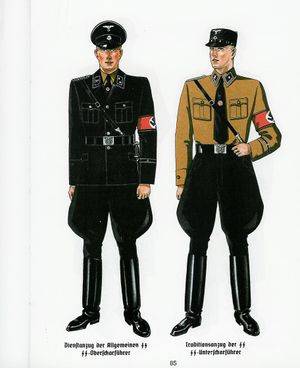среда, 18 декабря 2024 г.
понедельник, 16 декабря 2024 г.
вторник, 10 декабря 2024 г.
11,12,2024
https://app.engxam.com/cae/use-of-english/4/
https://app.engxam.com/cae/listening/1/
понедельник, 9 декабря 2024 г.
10.12.2024
![[optional image description]](https://cdn.theatlantic.com/media/mt/culture_test/snowbanner.jpg)
"I guess you think you know this story.
You don't. The real one's much more gory.
The phoney one, the one you know
Was cooked up years and years ago,
And made to sound all soft and sappy
Just to keep the children happy."
–"Cinderella," by Roald Dahl
In the first minute of the trailer for Snow White & the Huntsman, Charlize Theron's evil queen Ravenna strips naked, sucks the "youth" out of a teenage girl, and plots to rip Snow White's heart from her chest. Given that most people think of Snow White as an innocent girl twirling through a forest, singing about the someday when her prince will come, this is less a trailer and more a statement of purpose: This story isn't for children anymore.
Snow White & The Huntsman is, yes, another fairy-tale film adaptation aimed at adults, coming on the heels of this year's Mirror, Mirror, last year's Red Riding Hood, and dozens of other works in the past decade. They're the latest in the long but accelerating trend that's undoing Disney's 20th century work of transform horrifying folk stories into genial animated musicals. While such retellings may seem subversive, they're actually throwbacks, marking a return to what these tales originally were—before, even, the Brothers Grimm got their hands on them.
The contemporary idea of the fairy tale can be traced to 1812, when Jakob and Wilhelm Grimm published a collection of folk stories called Children's and Household Tales—now much more commonly known as Grimm's Fairy Tales. From "Rapunzel" to "Hansel and Gretel," from "Cinderella" to "Sleeping Beauty," and all the way up to "Little Snow White."
1 What contrast does the text establish between traditional and modern adaptations of fairy tales?
2 What is the significance of referencing Roald Dahl’s Cinderella in the context of this discussion?
3 How does the text argue that contemporary retellings are both subversive and traditional?
4 What is the tone conveyed by words like “gory,” “phoney,” and “soft and sappy”? How do these choices shape the reader’s understanding of the argument?
5 What is the central argument of the text, and how is it supported through examples and comparisons?
https://app.engxam.com/cae/listening/1/
среда, 4 декабря 2024 г.
понедельник, 18 ноября 2024 г.
вторник, 12 ноября 2024 г.
четверг, 7 ноября 2024 г.
понедельник, 4 ноября 2024 г.
05.11.2024
https://app.engxam.com/cae/listening/1/
https://app.engxam.com/cae/reading/1/


Wikimedia CommonsSS uniforms produced by Hugo Boss.
In 1931, two years before the Nazi Party took control of the German government, Hugo Boss started his fashion label in Metzingen, Germany.
Even before then, Boss had numbered among Germany’s Nazi collaborators, producing early Nazi uniforms in a factory he’d bought in 1924.
четверг, 31 октября 2024 г.
среда, 16 октября 2024 г.
22.10 (17.10.2024 c)
Hugo Boss

Wikimedia CommonsSS uniforms produced by Hugo Boss.
In 1931, two years before the Nazi Party took control of the German government, Hugo Boss started his fashion label in Metzingen, Germany.
Even before then, Boss had numbered among Germany’s Nazi collaborators, producing early Nazi uniforms in a factory he’d bought in 1924.
понедельник, 14 октября 2024 г.
15.10.2024
https://app.engxam.com/cpe/reading/1/
Stonehenge Monument
Stonehenge is an ancient monument situated about ten miles north of Salisbury in England. It was built about 4500 years ago, but by whom and for what purpose remains a mystery. The builders must have known of geometry. They may have been influenced by the Mycenaeans, whose architecture was similar. Some of the stones must have been brought from West Wales, over 135 miles away. These stones weigh more than fifty tons. They may have been brought on rafts and rollers. Experts say that it must have taken 1500 men more than five years to transport them. Stonehenge was probably built in three stages. First, settlers from continental Europe built a temple for sun worship. Later the "Beaker" people added the stone circles. Finally, people of the Wesse Culture transformed Stonehenge into an observatory. They could calculate the exact time of Midsummer and Midwinter and of equinoxes.
https://www.englishrevealed.co.uk/AV/collocations/collocations_adjective_noun_1.php

-
Mind Control: How Apps Use Design Tricks To Hook You The ubiquity of apps has revolutionized how we interact with technology, embeddi...
-
Academic Reading Test 1. Section 1👇 Aphantasia: A life without mental images Close your eyes and imagine walking along a sandy beach and ...
-
The Sahara Film Festival After a bumpy 225km drive from a meagre airstrip in Tindouf, south western Algeria, a sprawling single-story town...


















